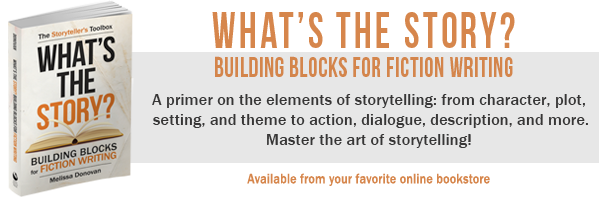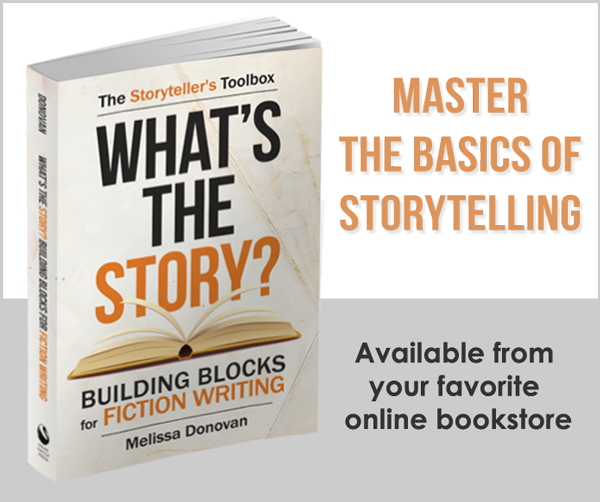Many writers and readers will agree that the most important element of any story is its characters. There are certainly exceptions: some plot-driven stories are quite compelling and successful. However, readers form their deepest connections to stories through the characters by developing relationships with them and caring about what happens to them.
Naturally, we want our characters to be realistic. We want them to resonate, to come alive in readers’ imaginations. We work to give them distinct voices and personalities, extensive backstories, and vivid descriptions. We do all of this so readers will develop an emotional bond with our characters.
All of these aspects of characters make them seem more like real people. But there are five essential aspects that sometimes get overlooked, and these are the critical ingredients of the characters’ function within a story:
1. Goals
What is the point of any story if the protagonist isn’t working toward a goal? It can be a simple goal, like getting into the best college or falling in love. It can be a meaningful goal, like making a deep and lasting personal transformation toward becoming a better person. It could be a momentous goal, like saving the planet.
Almost every story involves a goal at the heart of the plot. The main characters on the protagonist’s side are working toward this common goal, but things get interesting when they each have their own personal goals too.
Let’s imagine a story about a team of mercenaries on a mission to take down an enemy combatant. That’s the central plot, the common goal shared by the main characters. But what if the enemy once saved the life of one of these mercenaries back when they were serving together in the military? What if that mercenary feels an obligation to return the favor? Things get infinitely more interesting.
When characters have a combination of common goals and personal goals, there are more opportunities for conflict and challenges, and a story becomes more dynamic.
2. External Conflict
It’s only interesting to watch characters work toward a goal if achieving it is a struggle. The external conflict might be the cause of the goal (aliens are invading, so we must save the planet). But external conflict can also interfere with the goal (the protagonist wants a promotion, and her best friend wants the same promotion). External conflict can also change the goal (a high school graduate was about to study engineering at college, but now he must fight in the front lines of a war, and he wants to survive).
An external conflict is often the driving force of a plot. But characters can experience external conflicts independent of the plot. Consider a mystery story in which the plot’s external conflict is a serial killer on the loose in a big city. Meanwhile, the lead detective on the case is dealing with his own external conflict…his teenaged daughter is being stalked by a creepy kid at school, which is distracting the detective from the serial-killer case.
External conflicts make it difficult for the characters to achieve their goals, including the central goal of a story’s plot and the characters’ individual, personal goals.
3. Internal Struggle
An internal struggle pits personal values, goals, conflicts, or challenges against each other. A scientist developing a cure for a devastating disease stumbles upon a formula for a virus that would cause a pandemic. The company she works for is actively working to produce biological weapons. Her goal is to cure this disease, but her moral compass urges her to keep the formula secret, lest it be used as a biological weapon.
Internal struggles force characters to make difficult choices. They often must choose from bad or worse options, and the right choice almost always involves a meaningful sacrifice. Often the right or best option is unclear: there is no correct choice, only a personal choice. What if the scientist’s best friend is suffering from the disease she’s trying to cure? What if she has learned that as soon as the right biological weapon is available, her company will engage in biological warfare? Now the internal struggle intensifies — the character is forced to choose between her best friend’s health and the possible decimation of large swaths of the population.
Most protagonists engage in internal struggles, but other characters can struggle internally as well. Our story gets even more interesting if one of the scientist’s coworkers discovers that she’s hiding a formula from the company. This coworker is close friends with our scientist but is also loyal to the company. He struggles internally with whether he should protect her secret or rat her out.
4. Strengths, Skills, and Assets
In order to survive the challenges that a story throws at its characters, they must possess strengths, skills, and assets. These can be personal strengths like fortitude or loyalty, or they can be skills and abilities, like hand-to-hand combat or hacking. Material assets, such as personal wealth, are also useful in many situations.
Characters must draw upon their strengths, skills, and assets to work toward their goals and overcome the external conflicts and internal struggles that they face.
Most authors are good at giving their characters strengths, skills, and assets, but sometimes they aren’t spread around enough. The protagonist will be an almost perfect human specimen while their teammates will contribute little to achieving the central goal. Characters’ strengths, skills, and assets shouldn’t make them superhuman, and each character should make a positive contribution to the cast’s efforts.
5. Flaws and Weaknesses
A character can’t truly be human (or human-like) without flaws and weaknesses. As the saying goes, nobody’s perfect. Characters must reflect this truth. But more importantly, characters’ flaws and weaknesses often provide essential story fodder in the form of setbacks. In a political thriller, a senatorial candidate’s weakness might be a secret from his past, which, if exposed, would destroy his career. In a romance, if the protagonist’s flaw is that she’s indecisive, she might let the love of her life get away because she can’t make up her mind.
Flaws and weaknesses interfere with the characters’ progress toward their goals and provide much-needed setbacks for the plot and subplots. We want to see our favorite characters succeed, but success is sweeter if it comes after a few failures, and failures are often caused by the characters’ own flaws and weaknesses.
Some authors struggle to give their characters flaws and weaknesses (especially the protagonists). It’s understandable. We can be protective of our characters, almost as if they were our children. We want them to be strong and successful. But weaknesses and flaws make characters relatable and give readers something to cheer for — we want to see the characters overcome these setbacks.
Connecting Characters with Story
Ideally, all these things (goals, internal struggles, external struggles, strengths, and weakness) will tie in with the central plot and be woven through the story’s subplots and themes.
Do all characters in every story need these five things? No. The protagonist certainly needs them. One of the other main characters might get a goal and a weakness but no internal struggle. Another might get an internal struggle and a goal but no notable external conflict. Every character is different, but wherever possible, providing characters with these elements will intensify and strengthen a story.






Trackbacks/Pingbacks